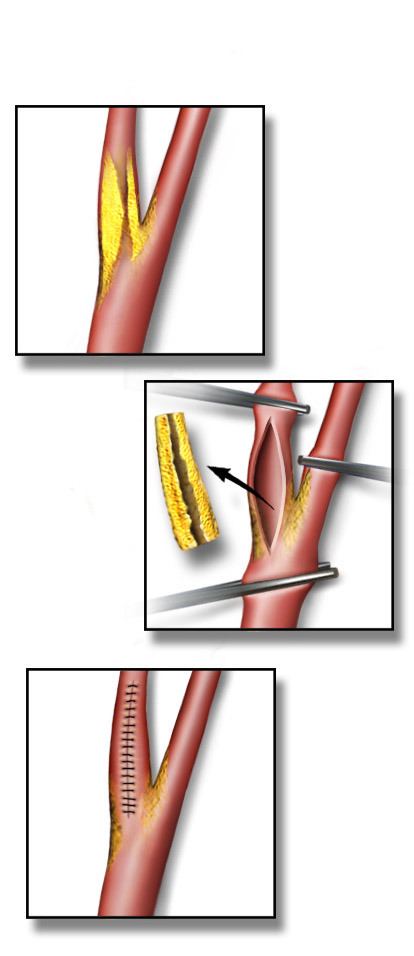ICD-9-CM 38.1 | MeSH D004691 | |
 | ||
Endarterectomy is a surgical procedure to remove the atheromatous plaque material, or blockage, in the lining of an artery constricted by the buildup of deposits. It is carried out by separating the plaque from the arterial wall.
It was first performed on a superficial femoral artery in 1946 by Portuguese surgeon, João Cid dos Santos, at the University of Lisbon. In 1951, E. J. Wylie, an American, performed it on the abdominal aorta. The first successful reconstruction of the carotid artery was performed by Carrea, Molins, and Murphy in Argentina, later in the same year.
The procedure is widely used on the carotid artery of the neck as a way to reduce the risk of stroke, particularly when the carotid artery is narrowed. A carotid endarterectomy may itself cause a stroke at the time of operation.
Endarterectomy is also used as a supplement to a vein bypass graft at the sites of surgical anastomosis.
Pulmonary hypertension caused by chronic thromboembolic disease (CTEPH) may be amenable to pulmonary thromboendarterectomy of the pulmonary artery. This is a highly specialized procedure.
